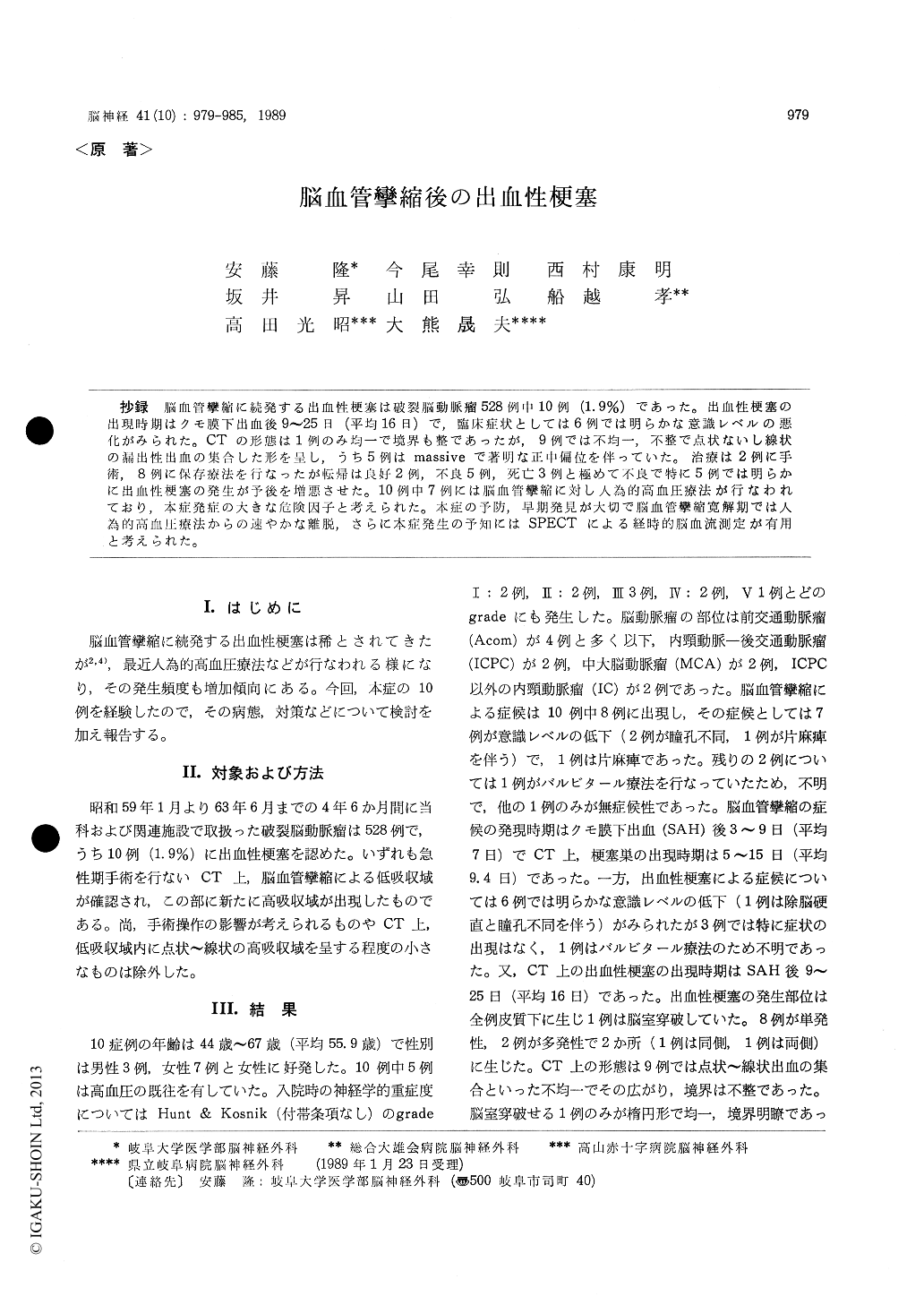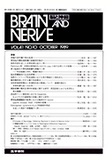Japanese
English
- 有料閲覧
- Abstract 文献概要
- 1ページ目 Look Inside
抄録 脳血管攣縮に続発する出血性梗塞は破裂脳動脈瘤528例中10例(1.9%)であった。出血性梗塞の出現時期はクモ膜下出血後9〜25日(平均16日)で,臨床症状としては6例では明らかな意識レベルの悪化がみられた。CTの形態は1例のみ均一で境界も整であったが,9例では不均一,不整で点状ないし線状の漏出性出血の集合した形を呈し,うち5例はmassiveで著明な正中偏位を伴っていた。治療は2例に手術,8例に保存療法を行なったが転帰は良好2例,不良5例,死亡3例と極めて不良で特に5例では明らかに出血性梗塞の発生が予後を増悪させた。10例中7例には脳血管攣縮に対し人為的高血圧療法が行なわれており,本症発症の大きな危険因子と考えられた。本症の予防,早期発見が大切で脳血管攣縮寛解期では人為的高血圧療法からの速やかな離脱,さらに本症発生の予知にはSPECTによる経時的脳血流測定が有用と考えられた。
Among 528 cases with ruptured aneurysm, 10 cases (1. 9%) developed hemorrhagic infarction following vasospasm. There was no obvious rela-tionship between the occurrence and location ofaneurysm and the neurological grade on admission. Hemorrhagic infarction occurred from day 9 to 25 (mean day 16) after aneurysmal rupture, and the major neurological symptoms were aggravation of consciousness level, which appeared in 6 cases. On the CT scans of the hemorrhagic infarction following vasospasm, nine cases revealed hetero-genous hemorrhage as assembled of spotty or linear hemorrhages within the ischemic infarction, and 5 cases had massive hemorrhagic infarction in size with mass effect. Although surgical therapy for 2 cases and conservative therapy for 8 cases were performed, the results were unfavorable ; ie, 2 cases were good, 5 fair or poor, and 3 died. Especially, 5 cases with massive hemorrhagic infarction obviously resulted in poor prognosis. In our series, induced hypertension therapy for vasospasm was considered as a risk factor. In conclusion, it is necessary to avoid induced hypertention therapy in the remission stage of vasospasm and serial SPECT study might be recommended as a useful prospective method estimating the vasospasm.

Copyright © 1989, Igaku-Shoin Ltd. All rights reserved.


